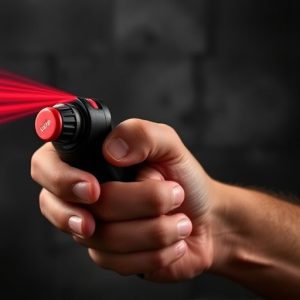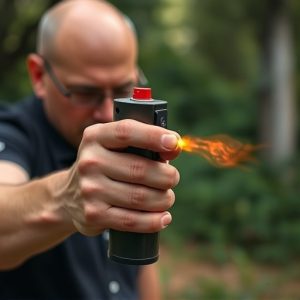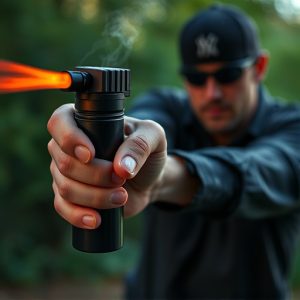Anti-Assault Pepper Spray: Protection & Immediate Care Guide
Pepper spray assaults are a growing concern across public spaces and homes. To combat this, immediat…….
Pepper spray assaults are a growing concern across public spaces and homes. To combat this, immediate care is crucial after exposure, including moving to fresh air, washing affected areas for 15 minutes, and documenting symptoms. Pepper spray neutralizes attackers with capsaicin, causing temporary blindness and respiratory distress. Choosing the right spray involves considering range, strength, and duration, while following safety guidelines and local laws. Immediate care post-exposure includes medical attention, thorough washing, hydration, and breathing exercises to mitigate discomfort and evidence for legal recourse.
“In today’s uncertain times, knowing how to defend yourself against assault is paramount. Anti-assault pepper spray stands out as a crucial non-lethal self-defense tool, offering individuals a means of safety and empowerment. This comprehensive guide explores the prevalence and impact of pepper spray assaults, delves into the science behind its effectiveness, and provides expert advice on choosing the right defense.
Furthermore, it details immediate care steps after exposure, ensuring readers are prepared to navigate post-incident challenges. Equip yourself with knowledge on how to recognize, respond to, and recover from a pepper spray assault.”
- Understanding Pepper Spray Assaults: Prevalence and Impact
- The Science Behind Pepper Spray: How It Works
- Choosing the Right Anti-Assault Pepper Spray for Your Safety
- Immediate Care After a Pepper Spray Incident: Steps to Take
Understanding Pepper Spray Assaults: Prevalence and Impact
Pepper spray assaults have become an increasingly common occurrence in today’s world, with incidents ranging from random attacks on the street to domestic violence situations. This potent chemical agent, when used as a weapon, can cause severe discomfort and even temporary blindness, leaving victims vulnerable and afraid. Understanding the prevalence and impact of pepper spray assaults is crucial for raising awareness and equipping individuals with the knowledge to protect themselves.
Immediate care after a pepper spray attack is essential to mitigate its effects. Victims may experience coughing, difficulty breathing, burning sensations in the eyes, and pain in the affected areas. It’s important to seek fresh air immediately and wash the affected skin and eyes with water for at least 15 minutes. Medical attention should be sought if symptoms persist or severe reactions occur. Additionally, documenting the incident and reporting it to local authorities can aid in preventing future assaults and providing legal recourse.
The Science Behind Pepper Spray: How It Works
Pepper spray, a powerful defense tool against physical assault, operates on a simple yet effective principle. Its active ingredient, capsaicin, is derived from chili peppers and triggers a burning sensation when it comes into contact with the eyes, skin, or respiratory system. This immediate reaction disorients and incapacitates an attacker, providing the user with precious time to escape or seek help.
Upon application, pepper spray creates a cloud of fine droplets that quickly spread, ensuring wide-area coverage. The irritant in each droplet stimulates nerve endings, leading to temporary blindness, teary eyes, coughing, and difficulty breathing. This immediate care response allows victims to disable their assailants, enabling them to get away safely until help arrives.
Choosing the Right Anti-Assault Pepper Spray for Your Safety
Choosing the right anti-assault pepper spray is crucial for your safety and peace of mind. When selecting a defense tool, consider factors such as the spray’s range, strength, and duration. Look for products that offer immediate care by providing a strong, long-lasting mist to disable an assailant effectively. Check the packaging for details on the active ingredient percentage and ensure it meets industry standards for potency.
Additionally, familiarize yourself with local laws regarding pepper spray possession and usage. Some areas have specific restrictions on the type and quantity allowed. Always opt for reputable brands that provide clear instructions and safety guidelines. Proper training in how to deploy the spray swiftly and accurately is also essential, ensuring you’re prepared to defend yourself in an emergency situation.
Immediate Care After a Pepper Spray Incident: Steps to Take
After a pepper spray incident, immediate care is crucial to mitigate discomfort and potential long-term effects. The first step is to move to a safe, well-ventilated area to avoid further exposure. If possible, seek medical attention promptly, as pepper spray can cause respiratory distress or other health issues, especially in those with pre-existing conditions. Removing contaminated clothing and washing affected areas with soap and water is essential to flush out the irritants.
Breathing exercises can help ease breathing difficulties. Staying hydrated and applying cold compresses to reduce swelling are also recommended. It’s important to document any symptoms experienced during and after the incident, as this can assist medical professionals in providing appropriate treatment and offer evidence for future reference if needed.
In light of the above discussions, it’s clear that understanding and being prepared for pepper spray assaults is paramount for personal safety. Choosing the right anti-assault pepper spray and knowing how to administer it effectively are crucial steps. Moreover, immediate care after exposure is vital to mitigating potential impacts. Remember that staying informed and taking proactive measures can significantly enhance your safety in various scenarios.


